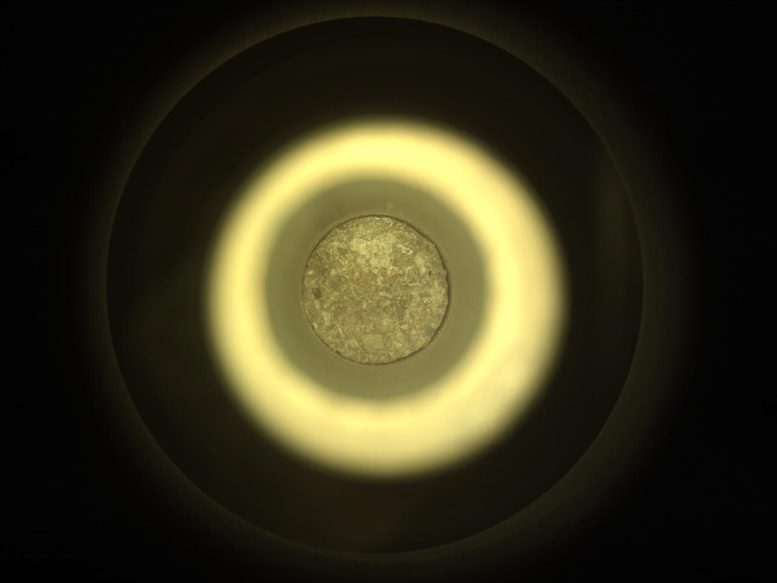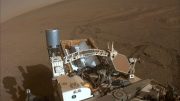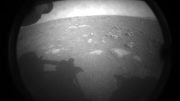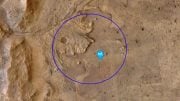
Mars Perseverance Sol 822 – Sample Caching System Camera: NASA’s Mars Perseverance rover acquired this image using its onboard Sample Caching System Camera (CacheCam), located inside the rover underbelly. Credit: NASA/JPL-Caltech
NASA’s Mars Perseverance rover, after initial failures, successfully obtained a conglomerate rock sample from Otis Peak in Jezero crater, despite its crumbly nature. The varied clasts in the conglomerate, potentially from distant locations, could offer valuable insights into Martian history. The team now sets their sights on Snowdrift Peak.
As previously described, the NASA Perseverance Science Team has been attempting to obtain a sample of a conglomerate rock unit on top of the fan in Jezero crater. The first attempt yielded a sample that was unfortunately too small, and the second attempt was unsuccessful. Why is this rock so difficult to sample, and why is NASA so intent on obtaining a sample?
A conglomerate rock is of special interest to the Science Team because they are made up of many clasts of rocks. These distinct clasts become cemented together over time to form the conglomerate. Importantly, these clasts were likely transported to Jezero crater from much farther away. Analyzing the distinct clasts and cements captured in a sample of the conglomerate would give insights into where these materials were sourced, how far they traveled, and what the Martian environment was like, both when the clasts first formed and when the conglomerate rock formed.
These exciting features of a conglomerate are also what made it difficult to sample – it’s crumbly! The clasts appeared loosely held together by a matrix of fine-grained sediment and mineral cement. When the rover tried to sample this rock, the fine-grained matrix likely broke up and caused the rock to fall apart. Nevertheless, because of the scientific merit of obtaining a sample of this conglomerate, the team prioritized trying again… and again.
And the third time was the charm! The rover successfully acquired a sample (pictured above) of the conglomerate at Otis Peak. Looking closely at this image of the sample from the CacheCam, you can see some of the distinct colors, denoting different clasts, present in the sample. Each clast will contain elements and minerals that can inform scientists about the history of water and rocks in Jezero crater. With another successful sample in the belly, Perseverance and the Science Team are now looking toward a drive to Snowdrift Peak on the way to the margin unit.









Be the first to comment on "Perseverance Personified: Triumph in Martian Sampling After Initial Setbacks"